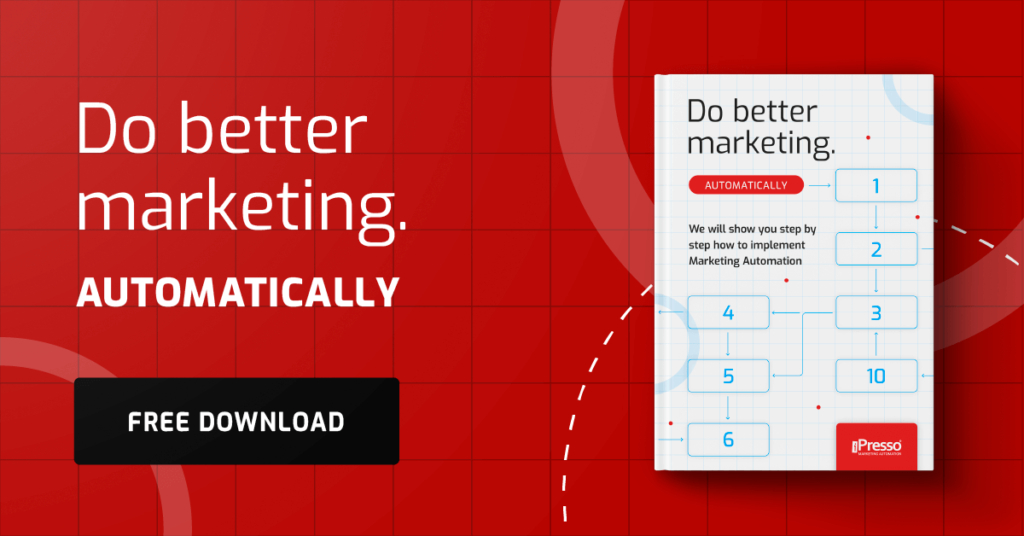7 reasons why your campaigns aren’t working

Are you spending more and more on marketing, but seeing no results? Are you dreaming of gaining new customers, but there’s no sign of improvement or increased interest in your offerings? We know what the reason is! See the most common mistakes made when creating marketing campaigns and learn our tips on how to deal with them.
What makes marketing campaigns not work?
Contact database chaos
Creating a database with the most important customer information can be difficult. It is up to you to make sure that the database contains valuable contacts, realistically interested in your offer. However, just collecting the data is not the only thing to keep in mind. The information should be kept up-to-date. Integrating the various tools you use will ensure that you avoid chaos and repeated items in the database. For example, when you change the location of a person, you may find that a contact will appear twice in the system. When creating a marketing campaign, you will send messages twice to the same customer, which may result in content from you being marked as SPAM. A much bigger problem will arise when, for example, the system registers a user’s opt-out from receiving marketing messages, and due to a lack of integration in another application, the contact will still show up among the people to whom you can send such an email. Getting your data in order is a step you should never skip, especially when RODO regulations are in effect. You probably don’t want customers to consider your campaigns pushy. With iPresso, you can have all your contacts’ data in one place, all thanks to an innovative tool – the Customer Data Platform.
Inappropriate communication channel
The main mistake that occurs when sending campaigns is a communication channel that is not matched to the recipient. It makes no sense to send a message via WhatsApp to someone who prefers to read emails. Campaigns targeting teenagers should include SMS and mobile push notifications, taking into account their frequent use of cell phones. If you see that some recipients often do not read the messages you send, it is likely that for the most part they simply prefer another form of contact. What’s more, the communication channel needs to be chosen appropriately for the type of message. If you want to create a campaign that will end after just a few hours or days, it is much better to choose, for example, SMS than email, which most recipients are likely to read only after that time. Remember that messages sent to cell phones have length limits and once they are exceeded, they are split into several parts, so always check the number of characters before sending, so that the recipient doesn’t suddenly receive a dozen SMS messages.
Sending the same messages to each recipient
Imagine that you are looking for a women’s winter jacket and have been interested in an offer from one of the online stores. You agree to receive marketing content and hope to make your choice of completing your winter closet easier. The first message contains an advertisement for a men’s sweater. Well, it’s not what you’re looking for, so you patiently wait further, while you browse the site and compare offers. Then the company sends you a text message about a sale on children’s shoes. You’re already feeling a bit discouraged, so you increasingly consider moving on to a competitor. The last message you read informs you of the latest spring collection. By this time you had already shopped at another store, because it immediately started showing you product offers similar to the last one you saw. Now you know why segmentation and personalization are important when creating campaigns. Of course, you can send offers to all your contacts every time, but with many products, there’s a very high probability that the ads won’t spark interest because they’ll be for quite different categories than those searched for by a particular recipient.
Inconsistency in design and lack of use of professional templates
How do you react to messages that differ in appearance from the previous ones you always receive from a given company? Do you probably consider it phishing and immediately throw such a message into SPAM? Well, then, now answer the question whether you really care about the appearance of your messages and remember to be consistent with your previous image. It is very difficult to manually take care of the aesthetics of each campaign and all the messages you create. It’s a known fact that pop-ups will vary a bit from one to another, and email messages can be created in different shades of color, but if your company has so far been characterized by pastel colors and fun graphics, a campaign in shades of black and brown with a combination of product images may raise concerns about whether you’re definitely not someone impersonating the sender. Having trouble creating consistent campaigns? Try the theme builder and see how many possibilities the new improved Drag&Drop editor offers! Don’t have an idea how to create a striking email message? Or maybe you need to create your own advanced templates? Our new editor will allow you to customize the template according to your needs and expectations of your recipients. Thanks to its simplicity, you’ll create the message of your dreams in a matter of moments, and you can drag and edit each element to best fit the content and consistency with your company’s look.
Setting up too many mailings at once to one customer
When sending campaigns, keep in mind that what’s too much is unhealthy. Sending out messages every few hours and setting up millions of pop-ups upon entering a website, the recipient may feel cornered by this and, instead of being interested in information from you, click a button to unsubscribe from receiving marketing content. Anyway, no wonder. Put yourself in the place of your recipient and see if you are “bombarding” him or her with ads too much. Some companies purposely create campaigns to display as much as possible to as many recipients as possible, but intrusive ads will be negatively associated with most, and that’s not what effective marketing campaigns are all about. Set a capping, or limit of ad impressions per user, and Don’t SPAM your audience. Take care not only of the customer, but also of your budget.
Website mistakes
It is well known that even the best marketing campaign will not be of any benefit if the customer is not able to shop comfortably, and there are problems when launching the site on a phone, for example. It’s better to fine-tune the website before customers come in, especially if it’s through the website that they are expected to make purchases online. Consider whether you’d be happy to return to a store where, after adding a dozen products to your shopping cart, you find that redirection to the payment gateway page is not possible, and the company explains to you that it’s working on the problem, but you can buy something in the stationary store. Of course, sometimes there are errors beyond your control, but if an underdeveloped site has too many of them, no one will buy. It’s very difficult to rebuild the trust of your audience afterwards, so it’s better not to create such a situation.
Incorrect links
Always make sure the recipient is sure to run the links and that they are set up correctly before sending the message. If you are sending SMS, shorten the links so that the message is not split into several long parts. Add tags so you know which campaign you managed to get the customer from. If you don’t pay attention to such things, your campaigns won’t bring the expected results. Don’t add a lot of random links that are not related to the campaign. If you are running a campaign in different countries, send links that are specific to the language version. A customer from the United States may feel confused if he clicks on a link and is redirected to an online store in Polish. If you know that you will offer different promotions for Polish users and others, for example, for German customers, don’t forget to create segments and tailor the content so that the customer can take advantage of the special offer.
Summary
There are many mistakes that can be made when creating marketing campaigns. Lack of results can be caused by simple things that you will eliminate in a few moments. Marketing automation is for anyone who wants to create more polished campaigns and get rid of the reasons why previous efforts have not been effective.
Looking for tools to help you run effective marketing campaigns? Click here and get free access to iPresso for 30 days!



